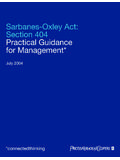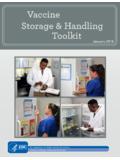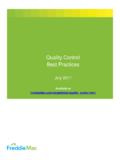Transcription of Guide to Developing a Language Access Plan
1 Building an Organizational Response to Health Disparities Guide TO Developing A Language Access PLAN Effective communication is critical to ensuring understanding, empowering patients, and providing high-quality care. A Language Access plan can help ensure that an organization provides high quality and appropriate Language services. A Language Access plan can also help ensure that an organization s staff members are aware of what to do when an individual with limited English proficiency needs assistance. This Guide identifies ways that providers can assess their programs and develop Language Access plans to ensure persons with limited English proficiency have meaningful Access to their programs. Introduction Nearly 8 percent of Medicare beneficiaries are individuals with limited English proficiency, many of whom need an interpreter or other Language assistance to communicate effectively.
2 Communication and Language barriers are associated with decreased quality of care and poorer health outcomes. Individuals with limited English proficiency are less likely to have routine health visits, more likely to defer needed health care, and more likely to leave the hospital against medical Entities that receive Federal financial assistance, such as Medicare Parts A, C, and D, must take reasonable steps to provide meaningful Access to their programs by persons with limited English This Guide identifies ways that providers can assess their programs and develop plans to ensure persons with limited English proficiency have meaningful Access to their communication is critical to providing high-quality care. Reliance on unqualified individuals to interpret medical information can lead to misunderstandings, devastating outcomes, or even ,5 A Language Access plan can help ensure that an organization provides high-quality and appropriate Language services.
3 A Language Access plan can also help ensure that an organization s staff members are aware of what to do when an individual with limited English proficiency needs assistance. 1 2 Title VI of the Civil Rights Act of 1964 and Section 1557 of the Affordable Care Act and implementing regulations (Title VI and Section 1557 respectively). See and respectively. 3 Entities that receive Federal financial assistance should consult with the Department of Health and Human Services Office for Civil Rights (OCR) to learn about their legal obligation to take reasonable steps to ensure meaningful Access to their programs by persons with limited English proficiency. See OCR website at: 4 5 What is a Language Access plan?Section 1: Needs AssessmentInformation about the needs of current and prospective consumers whose preferred spoken and written Language is a Language other than English, including the number of individuals with limited English proficiency, places in which consumers with limited English proficiency interact with the organization, and ways in which individuals interact with the organization.
4 A Language Access plan is a document that spells out how to provide services to individuals who are non-English speaking or have limited English proficiency. Language Access plans should be tailored to individual organizations, but may include similar sections, such as a needs assessment, Language services offered, notices, training for staff, and evaluation, as described below. Section 2: Language ServicesDescription of the types of services the organization will provide, such as in-person interpretation and remote interpretation. Section 3: NoticesDescription of how the organization will let its patients, clients, customers, or beneficiaries know about the availability of services. Examples may include taglines and 4: TrainingDescription of how the organization will train staff on its policies and procedures for providing Language assistance services, including who and how 5: EvaluationPlan for when and how the organization will monitor and update its plan, policies, and procedures to ensure that needs are met and that there is a framework for continuous quality 1.
5 Common Sections of a Language Access Plan Needs Assessment Language Services Notices training Evaluation Number of Individuals with Limited English Proficiency Points of Contact Level of Interaction Stakeholder Engagement Develop Policies and Procedures Interpretation Services Translation Services I speak cards Patient rights Taglines Signage Front-line staff Providers Leadership Monitor complaints or suggestions Keep current on community demographics Track utilization 6 Department of Justice, Civil Rights Division, Federal Coordination and Compliance Section. 2011. Language Access Assessment and Planning Tool for Federally Conducted and Federally Assisted Programs. Available at: Who should have a Language Access plan?Any organization serving individuals with limited English proficiency should develop a Language Access plan, more specifically: Organizations that receive federal funds, such as certain hospitals, health plans,community-based organizations, and others Or ganizations accredited by entities such as the Joint Commission or the NationalCommittee for Quality AssuranceThis document focuses on plans for individuals with limited English proficiency.
6 Plans, programs, and policies to meet the communication needs of consumers who are deaf, hard-of-hearing, or blind are also important, and may be covered in an organization s plan addressing regulation and legislation such as Section 504 and th eSection 508 Amendment to the Rehabilitation Act of 1973, and Title II and Title III of the Americans with Disabilities Act (1990).Assessing program accessibilityAn organization can assess the level of Language assistance services it should provide by conducting an individualized program assessment using a four-factor analysis (see Figure 2).7,8,9 The four-factor analysis is a tool to help an organization determine the extent persons with LEP come into contact with its programs and how it can best provide Language assistance services needed to ensure meaningful Access . Designate a Language Access coordinatorDetermine who in the organization will lead Language assistance efforts.
7 The coordinator may be a single person or committee who oversees the Language Access plan. Coordinators can respond to questions about the plan s content, help ensure that it is implemented, and monitor its performance. This coordinator will need the resources to accomplish the necessary tasks associated with the Language Access are various job descriptions for Language Access coordinators, but responsibilities generally include: Overseeing the organization s Language Access plan; maintaining a database of qualified interpreters and translators; Training staff on how to utilize Language assistance services when serving customers; Coordinating and managing requests for interpretation and translation; Managing a budget to provide Language assistance services; and Regularly assessing and improving the Language assistance 2: The Four Factors The number or proportion of persons with limited English proficiency who are eligible to be served or likely to be encountered by the program.
8 The frequency with which individuals with limited English proficiency come into contact with the program. The nature and importance of the program, activity or service provided by the organization to its beneficiaries. The resources available to the organization and the costs of Language services. 7 Guidance to Federal Financial Assistance Recipients Regarding Title VI and the Prohibition Against National Origin Discrimination Affecting Limited English Proficient Persons, federal-financial-assistance-title- Entities that receive Federal financial assistance should consult with the Department of Health and Human Services Office for Civil Rights (OCR) to learn about their legal obligation to take reasonable steps to ensure meaningful Access to their programs by persons with limited English proficiency. See OCR website at: gov/civil- 8 9 Section 1: Needs Assessment Call center Security Mailings Exam Room Individual & Organization Reception Figure 3: Examples of Points of C0ntact The first section of a Language Access plan should outline how the organization will assess the Language assistance needs of the communities it of individuals with limited English proficiencyTo understand the needs of current and prospective consumers with limited English proficiency, start by identifying the persons with limited English proficiency whom the organization serves or is likely to encounter.
9 Useful internal data sources may include call center information, information provided by navigators, and electronic health records. The Compendium of Resources for Standardized Demographic and Language Data Collection resource provides information and resources around data collection, including for race, ethnicity, and the organization does not have internal data, there are publicly available resources that estimate the Language needs of those individuals the organization is most likely to encounter. For example, the Census Bureau collects information about non-English languages spoken throughout the and can serve as an external source of data. On the Census website, there are Language tables that provide detailed information on the top non-English languages spoken throughout the , presented at the national, state, and county level. Points of contactIndividuals with limited English proficiency will need Language services at different points of contact within the organization, such as when they are contacting the call center, checking in with the reception desk, filling out paperwork, documenting a grievance, navigating the hallway, or paying a bill.
10 At each point, the organization will want to ensure that its services are linguistically accessible and appropriate. Examples of points of contact are in Figure 3. Each organization should assess where individuals interact with the organization, and determine what kind of Language services would be appropriate at each point of contact. The following examples describe how Language Access services could be provided at each centerThe Language Access plan should include a description of how the call center will identify and meet an individual s Language needs, whether through use of an automated system ( , for English, press 1, for Spanish, press 2), or early identification of the need for an interpreter or information in languages other than Language Access plan should include how the organization will provide Language Access services when patients check in for an appointment, seek directions, or need other types of information.














